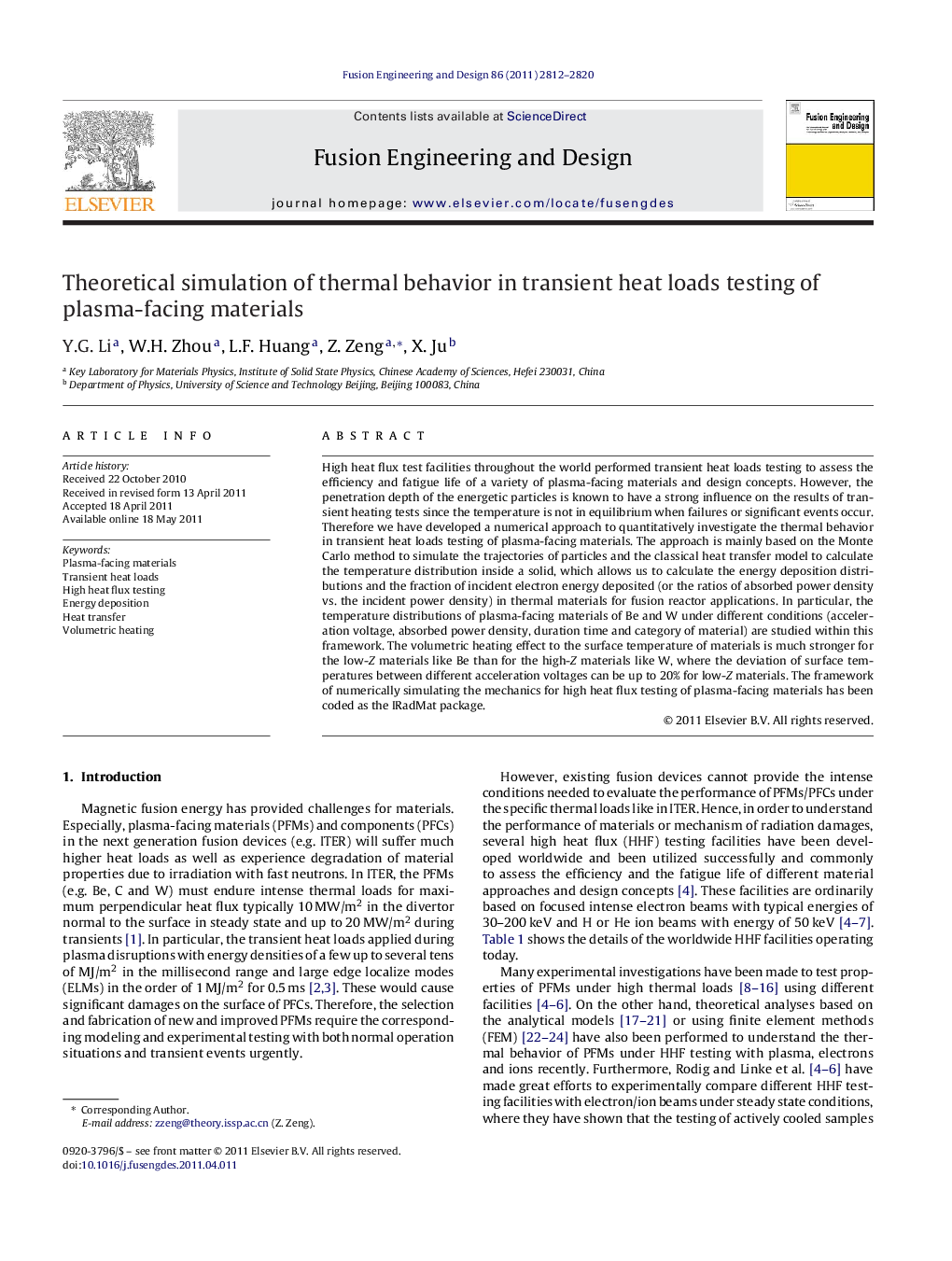| Article ID | Journal | Published Year | Pages | File Type |
|---|---|---|---|---|
| 272406 | Fusion Engineering and Design | 2011 | 9 Pages |
High heat flux test facilities throughout the world performed transient heat loads testing to assess the efficiency and fatigue life of a variety of plasma-facing materials and design concepts. However, the penetration depth of the energetic particles is known to have a strong influence on the results of transient heating tests since the temperature is not in equilibrium when failures or significant events occur. Therefore we have developed a numerical approach to quantitatively investigate the thermal behavior in transient heat loads testing of plasma-facing materials. The approach is mainly based on the Monte Carlo method to simulate the trajectories of particles and the classical heat transfer model to calculate the temperature distribution inside a solid, which allows us to calculate the energy deposition distributions and the fraction of incident electron energy deposited (or the ratios of absorbed power density vs. the incident power density) in thermal materials for fusion reactor applications. In particular, the temperature distributions of plasma-facing materials of Be and W under different conditions (acceleration voltage, absorbed power density, duration time and category of material) are studied within this framework. The volumetric heating effect to the surface temperature of materials is much stronger for the low-Z materials like Be than for the high-Z materials like W, where the deviation of surface temperatures between different acceleration voltages can be up to 20% for low-Z materials. The framework of numerically simulating the mechanics for high heat flux testing of plasma-facing materials has been coded as the IRadMat package.
